Adding theme
Please follow these steps in order to install a new WordPress theme.
Step 1: Login to your site as an admin user. Then go to Dashboard > Appearance.
Step 2: Open the Themes menu.
Step 3: Then click on Add New button.
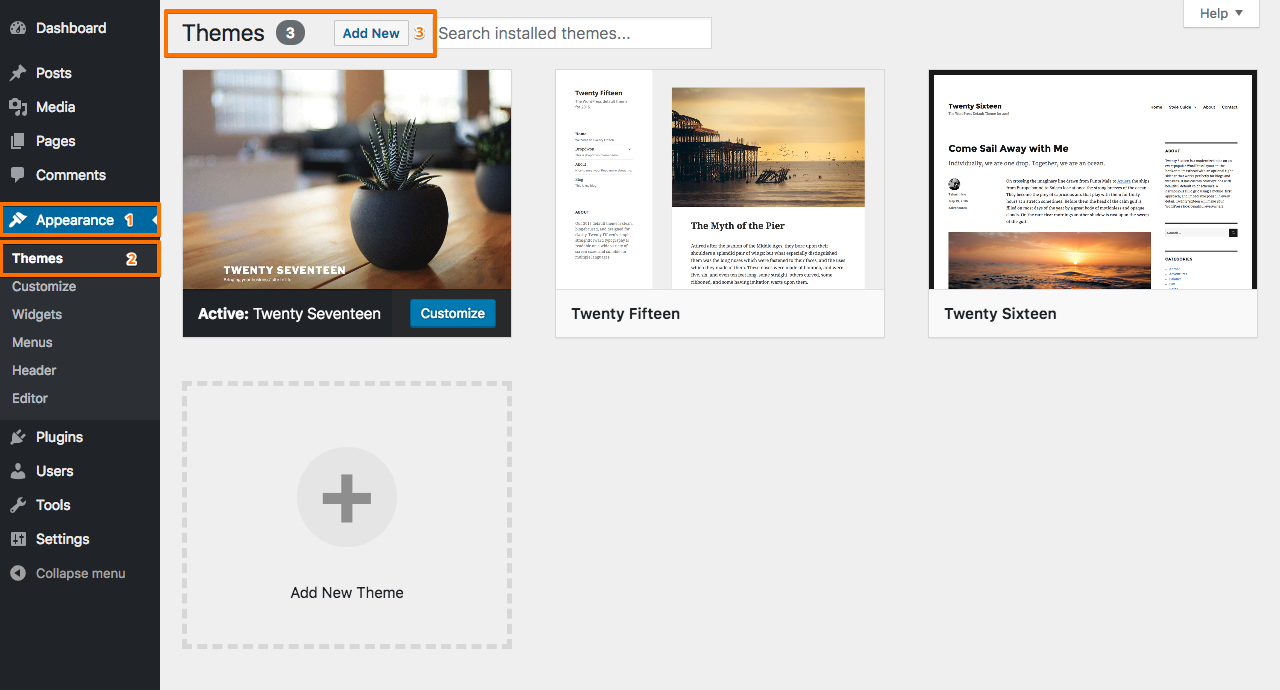
Step 4: Click the Upload Theme link on the next page.

Step 5: Then click on the Choose file button and select Patrios.zip file from your computer directory.
Step 6: Now click on the Install Now button and wait until the installation completes.
After successful installation of the theme, click on the Activate button and enjoy the theme features. After activating, this theme will be used for the whole site instead of the default WordPress theme.
Adding License

Upon purchasing the theme from Themeum website you were given a license key to use with this theme. To insert the key, go to Dashboard > Patrios Options > License.
Essential Plugins and Installation
For using all of the theme features, you need to install and activate the required plugins. All essential plugins are included in the Patrios theme.
- WP Page Builder
- WP Page Builder Pro
- WP Crowdfunding
- WP Mega Menu
- WooCommerce
- Patrios Core
- WordPress Importer
- Patrios Demo Importer
- Widget Importer & Exporter
- MailChimp for WordPress
Install above essential plugins in 2 easy steps.
Step 1: Go to Dashboard. You will see a notification at the top of the page asking to install the recommended plugins. Install these recommended plugins from there. Or, go to Dashboard > Plugins and you’ll see a notification. Click “Begin Installing Plugins”, it will take you to the installation page.
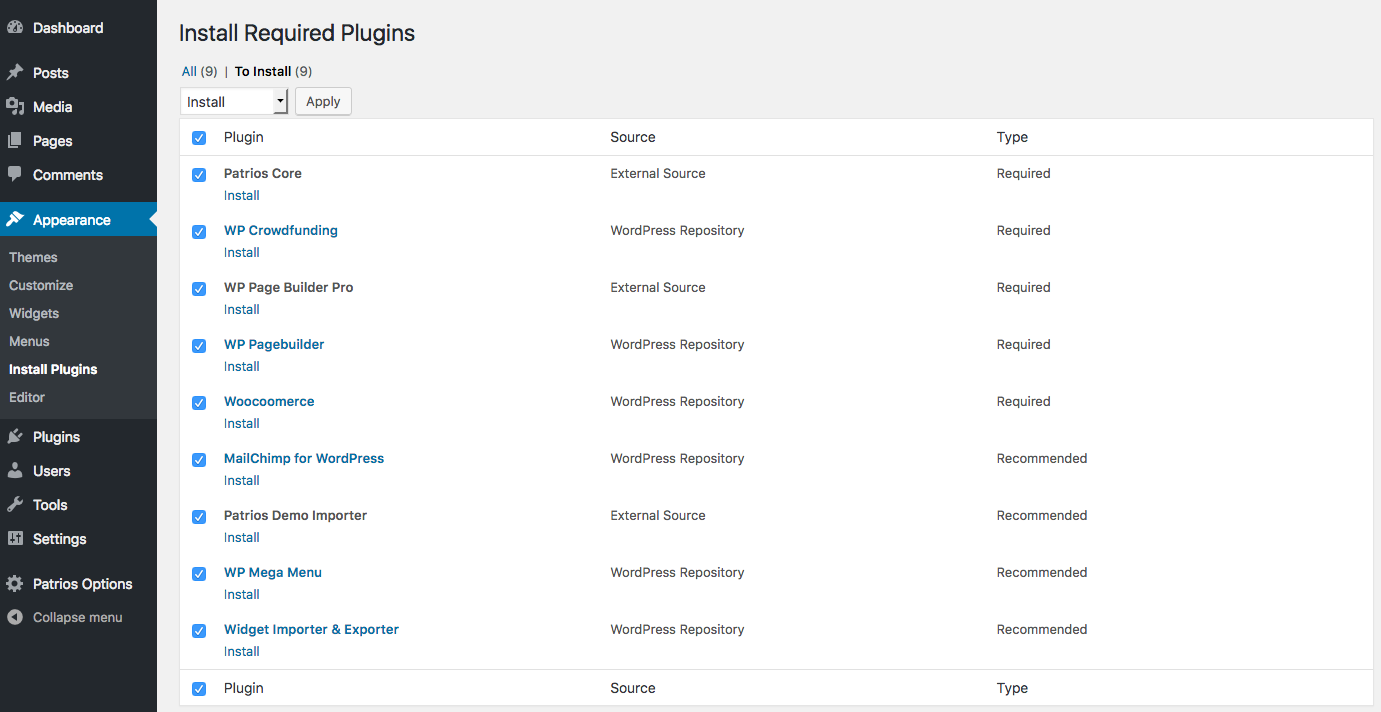
Step 2: Then Activate to enjoy these plugins.

Import Demo Automatically
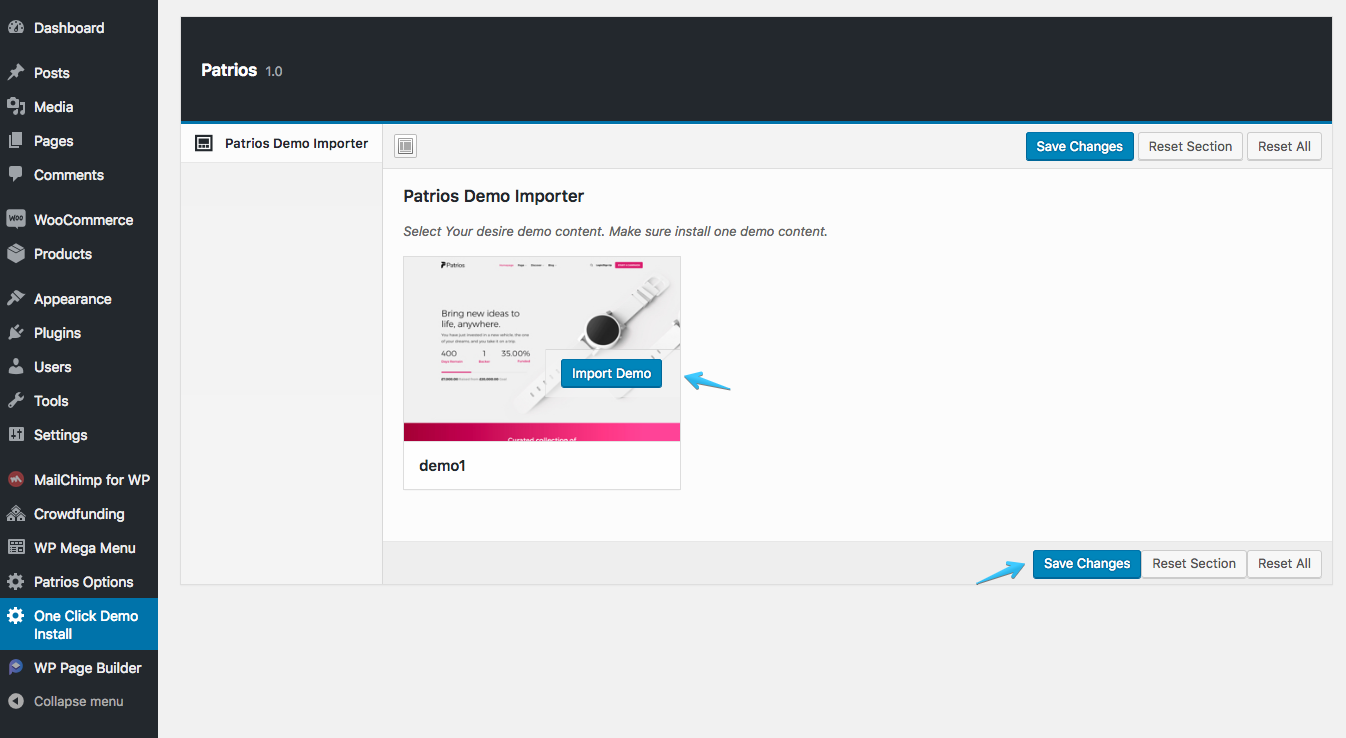
Importing data on Patrios theme is very simple. Go to the Dashboard and select One Click Demo Install. Click on “Import Demo”. Save the changes when it is done.
If you’ve already used the One Click Demo Install, then you no longer need to import demo manually. In case you don’t use the Demo Importer, then follow the next section to import data manually.
Import Demo Manually
Import Sample Data: If you want to go with the demo data which is available on the theme, then you’d need to import the sample data. To import the sample data manually, first go to the left sidebar (Dashboard), then choose Tools > Import > WordPress > “Install Now” (from the list), once you’ve clicked “Install Now” you’ll see the button changed to “Run Importer” click on it now. Then you will see the “Import WordPress” option which allows you to upload a .xml file from the Demo Content folder (file name: demo-content.xml) found inside the extracted folder that you get from the download theme package (a zip file).

Once you imported the demo-content, you’ll be presented with another screen where you’d need to select the user and checkmark download attachment, then finally click “Submit”. Check out the following screenshot.
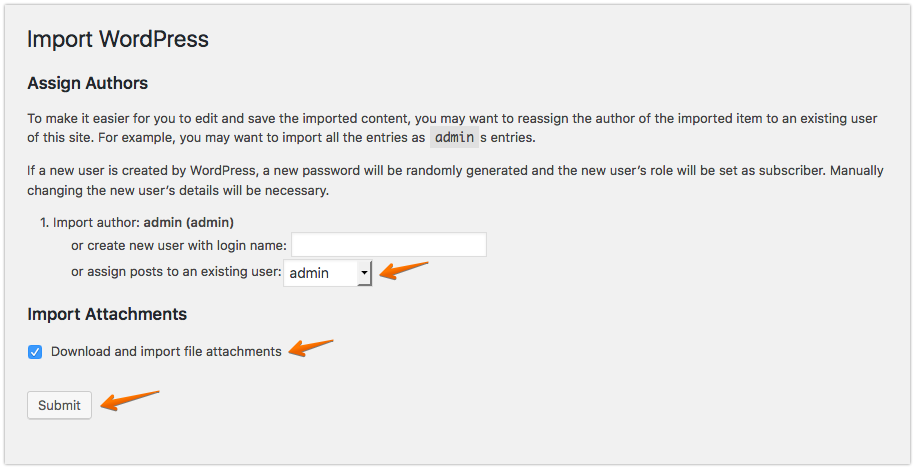
N.B: Upon importing demo manually you need to set up the following things.
Menu Settings
It’s an important part of the Patrios theme Installation process. First, you need to set your menu for the Primary Menu location. Go to Dashboard > Appearance > Menus, then click on Manage Locations and select/create your menu for the Primary Menu location. You can follow the screenshot below. Don’t forget to save your settings.
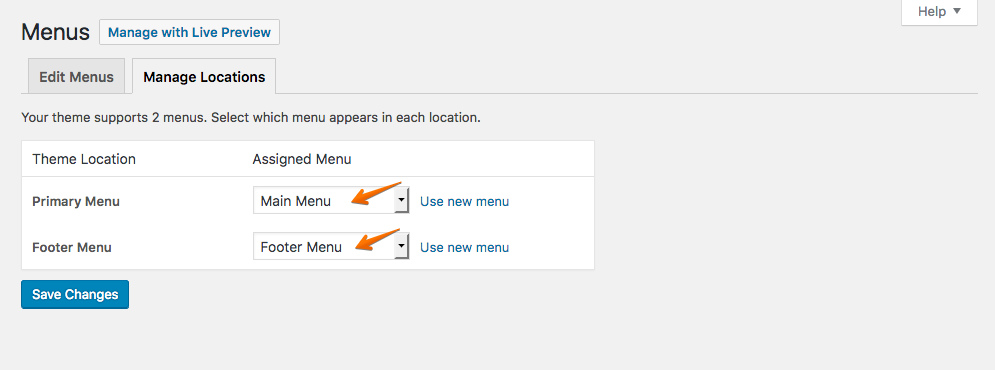
Mega Menu theme import
Once you set the menu up, you need to configure the mega menu theme. To do so, go to Dashboard > Mega Menu > Themes. Find “Import Theme” option and upload “patrios-theme.txt” found under “Megamenu Theme” folder.
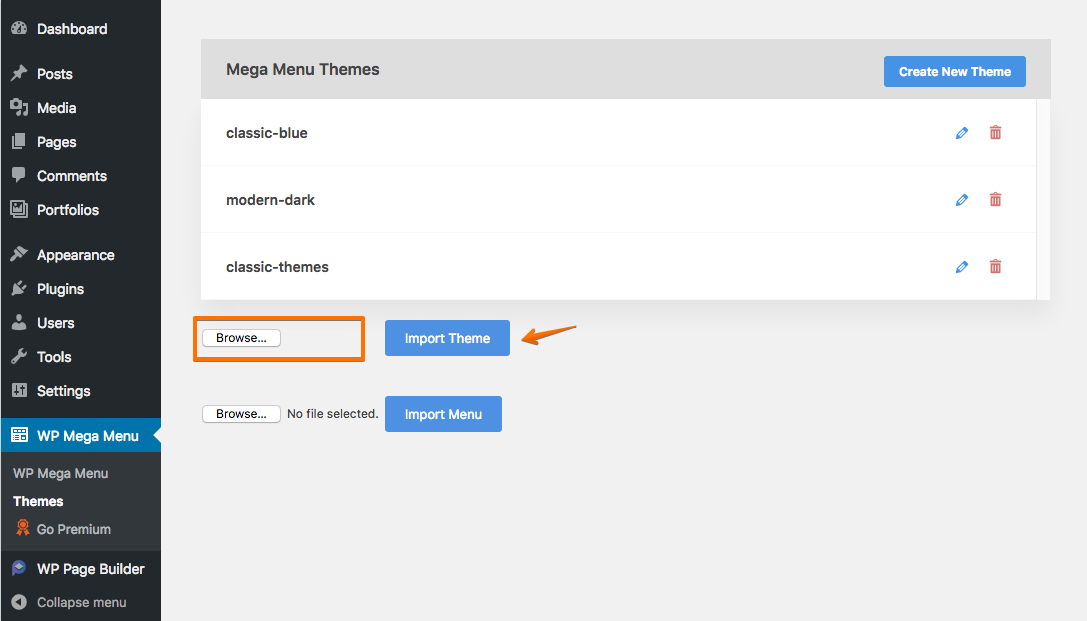
Mega menu
To enable the Mega menu feature for any menu item on the navbar, go to Dashboard > Appearance > Menus. Then click any menu item you like and configure the Mega menu. See the following screenshot.
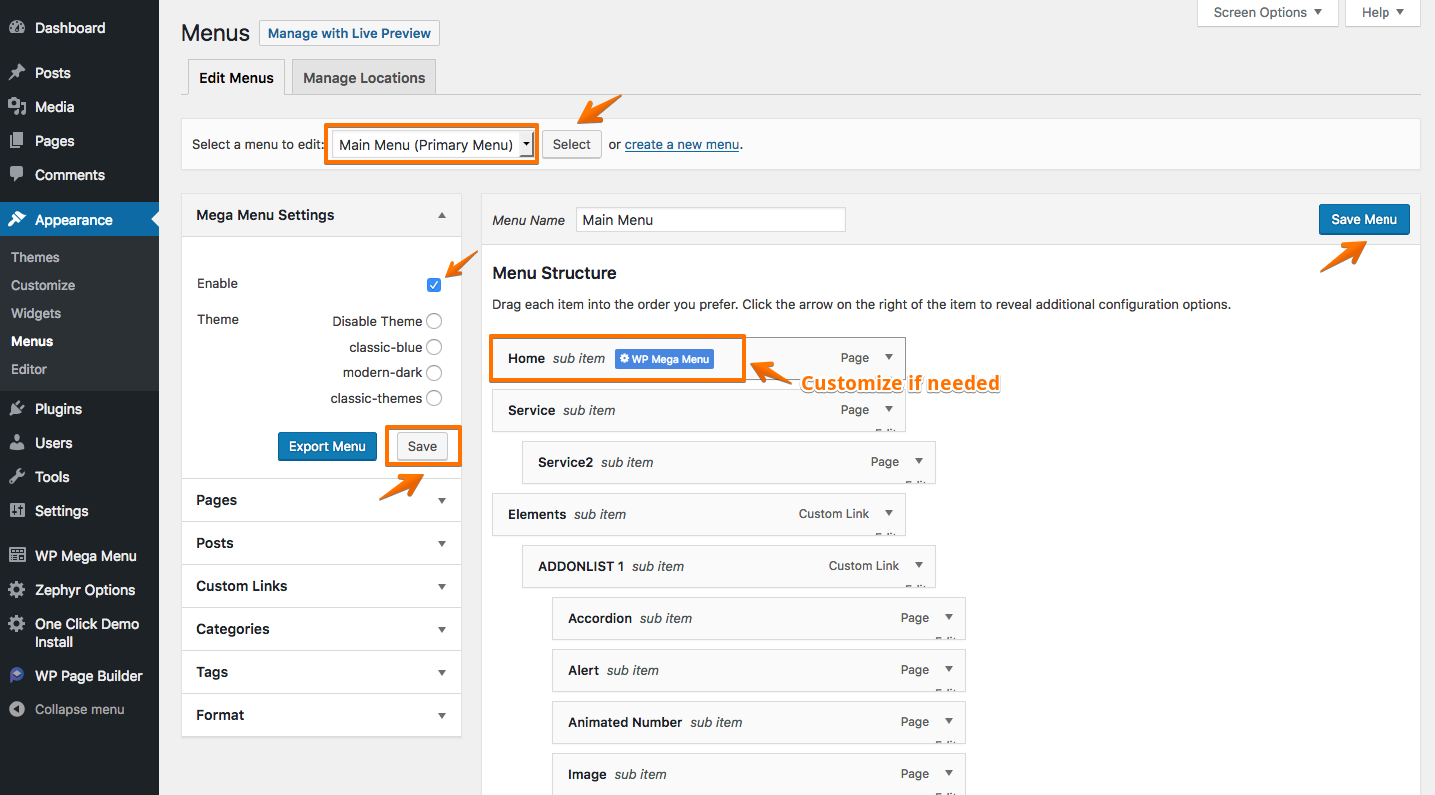
If you still have any confusion check out this detailed video on how to configure WP Mega Menu properly.
Set Static Home Page (Required)
WordPress may show the latest blog posts on the front page after a fresh install. If you want to make it look like the demo Patrios site, then you need to set a static Home Page. To do so, navigate to Dashboard > Settings > Reading. On that page, choose “A static page” from the “Your homepage displays” section. From the drop-down menu, select the page Home for Homepage and the page Blog for the Posts page.
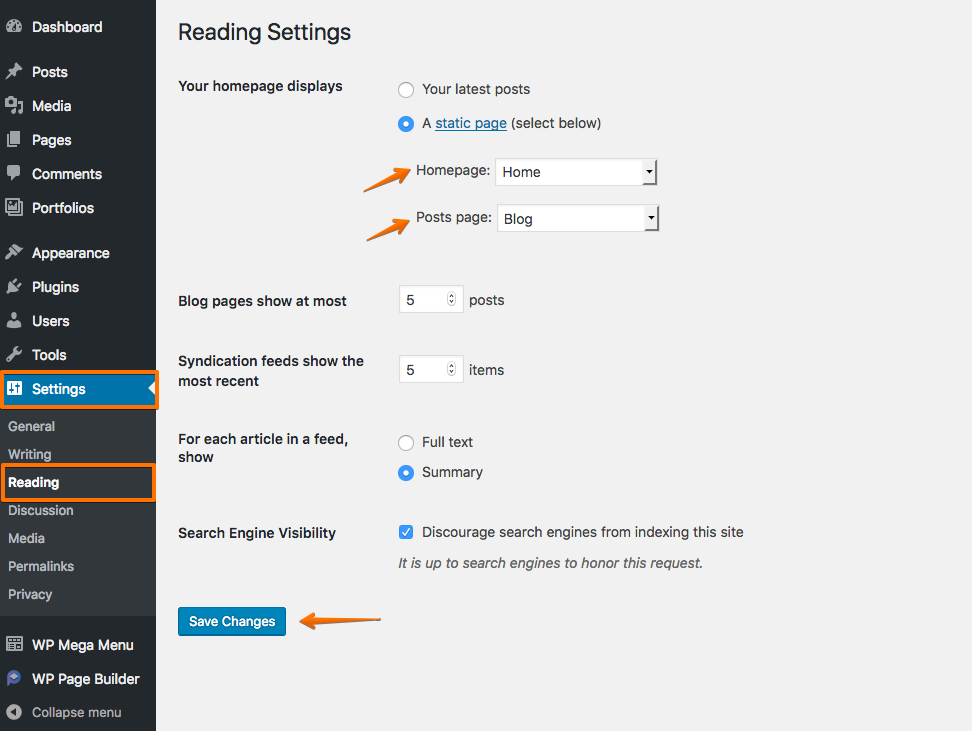
Setup Permalink (Required)
Make sure to configure the permalink structure. By default, WordPress generates web URLs having question marks and lots of numbers in them. However, WordPress offers you the ability to create a custom URL structure for your permalinks and archives. This can improve the readability, usability, and forward-compatibility of your website links.
From WP admin panel go to the following path Settings > Permalink then select “Post name” (or any other depending on your choice) as the permalink structure for your WordPress site.
Widgets Settings Import
Import Widget Setting Data: If you want to use the demo site widget settings on your website, we recommend to install and activate “Widget Settings Importer/Exporter” (found under Tools section) plugin which gives you the ability to import the demo widget settings, saved as a .json or .wie file type. The import will not overwrite any data currently within the sidebars but will increase the number of widgets.
Choose Tools > Widgets Setting Import then select data-widgets.wie file from Widget Data folder (found inside the Patrios theme package you’ve downloaded). Then click on “Import Widgets” Button.
If you want to remove any of the widgets, go to Dashboard > Appearance > Widgets. Select your desired widget and click Delete.
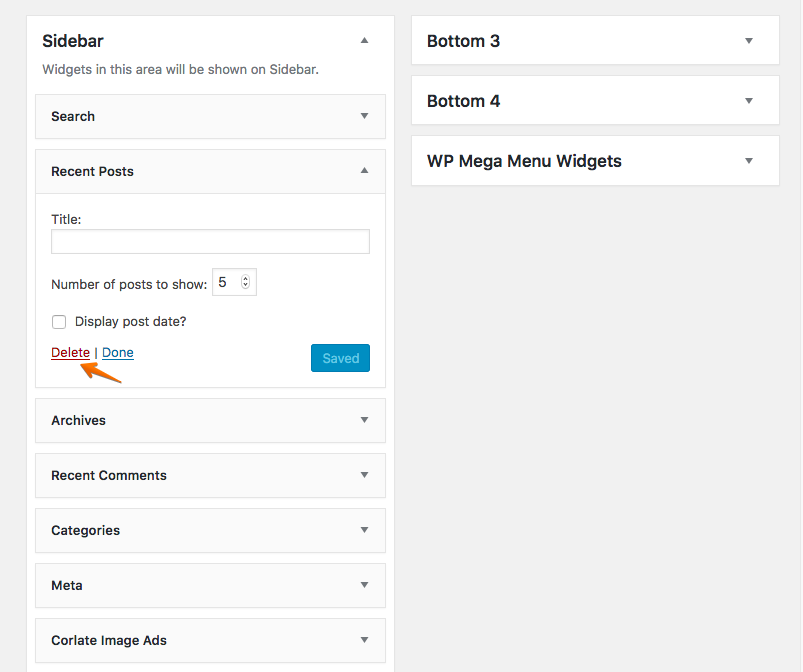
WP Page Builder
Since Patrios comes with WP Page Builder, you’ll see it is showing on the left sidebar. If you want to configure the settings in your own way, you can go to the WordPress Dashboard > WP Page Builder. Following is the explanation of all the functions.
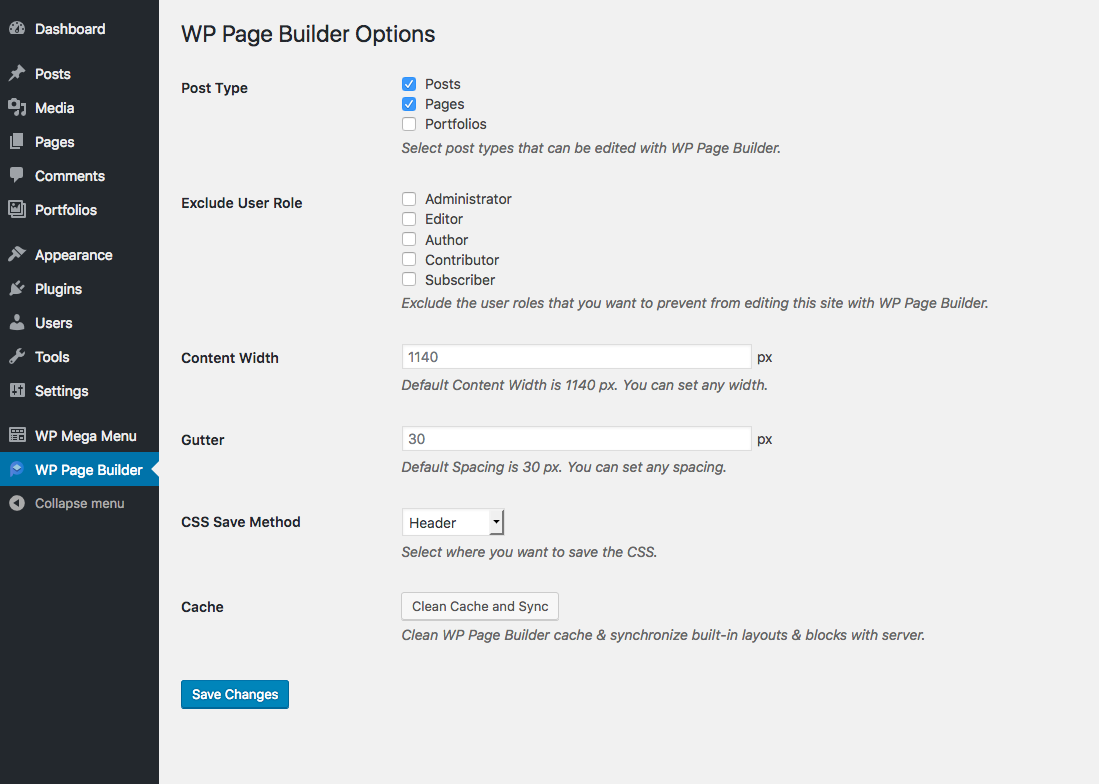
Post Type: You need to choose which type of content you will be editing with WP Page Builder. The types you’ll be selecting from here will allow the WP Page Builder to have editing accessibility.
Exclude User Role: This list shows all the user roles of your website. If you don’t want to give WP Page Builder editing permission to a particular user role type you can select it from here. You can select multiple role types as well.
Content Width: You can set the default content width from here. Current default content width is 1140 px.
Gutter: You can set the space length between columns from this setting. The default column spacing is 30 px.
CSS Save Method: You can define the CSS saving method from here. Selecting Header will save CSS in the header and selecting File System will save CSS in a separate file.
Cache: This option requires only a single click to clean WP Page Builder cache and synchronize the built-in blocks with the server.
And don’t forget to hit “Save Changes” if you ever made any changes to the setting otherwise it will not work.
